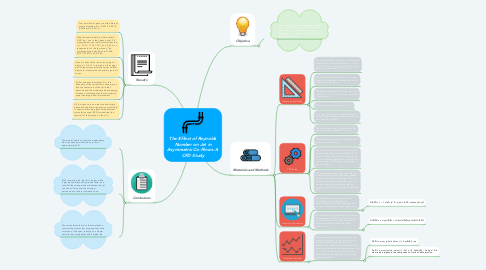
1. Objetive
1.1. Numerically study the development of the jet as a function of position and Reynolds number (Re) in a rotary kiln for iron ore granulation as a function of position and Reynolds number (Re).
2. Materials and Methods
2.1. Geometry and Mesh
2.1.1. The rotary kiln was simplified as a stationary cylinder with a diameter D furnace = 0.1 m, and the jet inlet is in the center of the back plate with a diameter D j = 1.5 mm.
2.1.2. The height of the back plate is 1/3 of the diameter of the oven and separates the air channel into two parts.
2.1.3. The upper secondary air channel has a tilt angle of 15 ° and the lower one is parallel to the furnace.
2.1.4. The length of the rotary kiln is 1.5 m.
2.1.5. A hexagonal mesh was constructed and multiple O-grids were applied to refine the part near the jet inlet
2.2. CFD Setup
2.2.1. The simulations were performed with the commercial code ANSYS CFX 16.0.
2.2.2. Navier-Stokes equations (uRANS) averaged by Reynolds were used
2.2.3. The time interval was set at 1 ms based on the dimensionless time interval ∆tU b / D oven = 0.005. The simulation time was set at 5.5 s to ensure that the fluid covered the entire length of the furnace, depending on the total speed.
2.2.4. The uniform mass flow rate was 1.08 kg / s at the two inlets of the secondary channel. The mass flow rate at the inlet of the jet nozzle was approximately 0.031 kg / s. An average static pressure with a relative pressure of 0.0 Pa was applied at the oven exit.
2.3. Governing Equations
2.3.1. The Reynolds decomposition of the turbulent velocity field gives the mean-momentum or Reynolds equations based on the Navier–Stokes equations as
2.3.1.1. D〈ui〉/Dt = − 1 z〈p〉+]z^2/ ρ zxi +〈u2i〉−zzxi/zxj 〈u′iuj′〉
2.3.2. For visualization of the jet and to describe the concentration field, a passive scalar is introduced in the numerical model. The Reynolds-averaged scalar transport equation is
2.3.2.1. D〈Φ〉/Dt = z/zxj ((DΦ + vt/Sct]z〈Φ〉/zxj−〈uiΦ〉)+〈SΦ〉
2.4. Turbulence Models
2.4.1. The standard k-ε model is widely used in industrial problems for its robustness. In previous works it was shown that the standard k-ε model predicts the mean flow field in the furnace in an adequate way. The k - ε model solves two equations for the turbulent kinetic energy k and the energy dissipation rate ε:
2.4.1.1. Dk/Dt= z/zxj (μt/σk zk/zxj ) + 2μtEijEij −ρε
2.4.1.2. Dε/Dt = z/zxj (μt/σε xε/zxj) + Cε1 ε/ k 2μtEijEij − Cε2ρ ε^2/k where Eij represents the component of rate of deformation.

